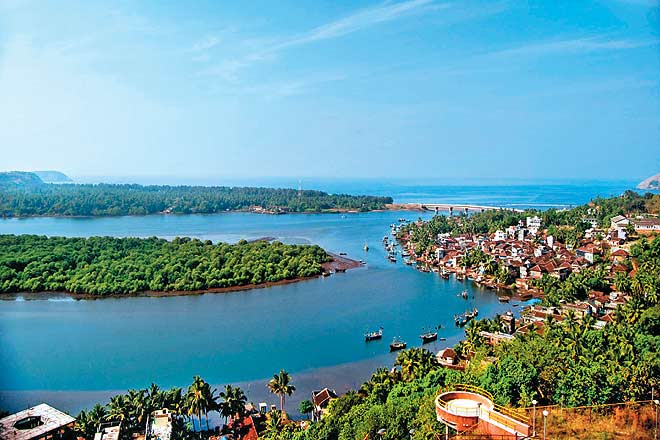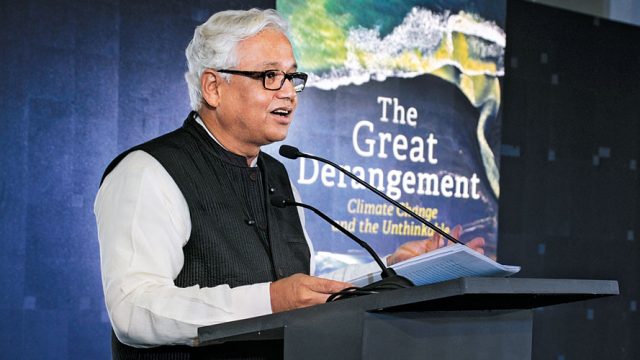Fast facts
State: Maharashtra
Distance: 363 km south of Mumbai
When to go: November-February; it is least
Tourist Office: MTDC, Collector’s Office Compound, Jaystambh, Ratnagiri
Tel: 02352-223847, 221508
STD code: 02352
Getting there
Rail: Ratnagiri
Air: Closest airports : Mumbai, Pune
Road: Route NH17 to Hathkhamba via Chiplun and Sangameshwar; NH204 to Ratnagiri
For most travellers, Ratnagiri is merely a pretty stop on the Konkan Railway, where red earth gleams under the tracks, and dark green trees laden with ripe mangoes whiz past the train windows. However, if you do decide to venture past the railway station, there’s even greater beauty to be discovered. Just 15 mins from the station is Ratnagiri’s glorious coastline, fringed by bright green hills. The port is what Mumbai must have been like in the 19th century. Indeed, the first view that greeted visitors landing at erstwhile Bombay’s Apollo Bunder would surely have been strikingly similar to the one served up by Ratnagiri today.
Its relative obscurity means that Ratnagiri has all the charms of an unspoiled seaside town: the air is suffused with a languor that borders on insolence. It boasts beaches that are mostly clean, fringed by coconut or mango trees.
Things to see and do
Red earth and green mangoes are Ratnagiri’s claim to fame, and its Burmese connection adds to the town’s exotic value. There are no water sports on offer on the three beaches. Ratnagiri can be covered in a day but you may want to keep aside some more time for the beautiful places around.
Of Ratnagiri’s three beaches, only Bhatye Beach is suitable for swimming. But there are no lifeguards around, so swimming is risky, and best avoided.
Bhatye Beach
Ratnagiri has an uneven sea-face, broken by a deep bay, which is spanned by the Bhatye Bridge. At the brown Bhatye Beach, the water rarely comes up above the knees for the first 50 yards. This isn’t a particularly beautiful beach; the sand isn’t white or even golden. However, it is the nicest of Ratnagiri’s three beaches. The further away you go from the bridge, the quieter it becomes. The thick barrier of suru trees between the beach and the coastal highway prevents sound from travelling either way, and by the time you reach the Coconut Research Station, you have the beach to yourself. In the tourist season, you might find an odd bhelpuri or nariyal pani vendor in the evening.
Ratnadurg Fort
Maratha emperor Shivaji’s Ratnadurg Fort is known as the Qila. It once sprawled across two hills, looking down at the magnificent blue sea. However, all that’s left of it today are crumbling walls. Inside the remnants of the fort is the Sri Devi Bhagwati Mandir, which gives the fort its other name, Bhagwati Qila. The government used the fort’s stones to build the Bhagwati Jetty, but the jetty itself was never operational. It’s still worth visiting the fort for the gorgeous views it offers. The fort is a short 10-min drive up from the main road.
Mandavi
Though this is a lively beach, it is also rather unclean. It lies close to the Ratnadurg Fort, and always has a sizeable crowd of visitors in the evening. But tourists would do well to stay away from the beach. The sand here is almost black; the area is littered and gets quite noisy. Mandavi also has the Ratnagiri Jetty, along with the unremarkable Gateway of Ratnagiri. It is an unfortunate sobriquet, as Mandavi is the least pretty part of Ratnagiri’s coastline. It is also impossible to navigate with the rocks jutting out of the water.
Pandre Samudra Beach
Located on one side of the Ratnadurg Fort, this beach lives up to its name, which can be literally translated as the ‘white sea’. However, it’s the sand and not the sea that’s stunningly white. Seen from the ramparts of the fort, it’s an inviting sight but closer inspection reveals that it reeks of fish, not necessarily a desirable prospect for many. Locals say that the fishermen dump all the catch that they consider worthless on this beautiful shore.
Lokmanya Tilak’s birthplace
The freedom fighter’s house, located on Tilak Ali and close to the Qila, has since been converted into the Tilak Ali Museum. It has many of Tilak’s pictures, and is a lovely example of traditional Konkani architecture.
The Burmese Link
Those who have read Amitav Ghosh’s the Glass Palace will identify Ratnagiri as the setting where an exiled Burmese king’s story unfolds. The Thibaw Palace is located close to Thibaw Point, which has a new watchtower from where one gets a bird’s eye-view of Ratnagiri. It was built for the king from Myanmar (then Burma) who was dethroned and exiled to India by the British. The palace, built under the king’s supervision, is modest by royal standards. It was completed in 1910 at a cost of INR 1.25 lakh. It also houses a museum of antiquities found in the area. The palace has undergone much renovation, and continues to be a major attraction.
Where to stay
Ratnagiri gets many visitors as it is the district headquarters. Agents troop in during the mango season, while others drop in round the year for fish. Finally, there are the tourists and pilgrims for whom Ratnagiri is the most convenient point of access to both Ganapatipule and Pawas.
Kohinoor Samudra Beach Resort (Tel: 02352-255231-32; Tariff: INR 5,750-15,500; www.kohinoorhotels.com/ratnagiri) is located a few kilometres out of town on the Pawas coastal highway. There is a large open-air swimming pool, a children’s play area, fitness equipment, and everything else you would expect from an expensive resort.
Ratnasagar Resort (Tel: 235473-74; Tariff: INR 3,300-11,000; www.ratnasagarresorts.com) has 30 pinewood cottages on Bhatye Beach. The resort has a restaurant, bar, swimming pool and provides bikes and indoor/ outdoor games.
Hotel Kaanchan (Tel: 228250-51; Tariff: INR 1,100-1,800; www.hotelkaanchan.com) is also close to the railway station, with a gym, a multi-cuisine garden restaurant, and a permit room (bar).
Hotel Prabha (Tel: 223515; Tariff: INR 800-1,560) is more like a lodge and is located in the heart of town, which means that the surroundings aren’t very quiet.
Hotel Vihar Deluxe (Tel: 222944-45; Tariff: INR 999-2,200; vihardeluxe.com) was possibly the first hotel to come up in Ratnagiri, in 1980. It’s fairly large, and its two dining halls, two permit rooms and one terrace restaurant speak volumes for its popularity.
Hotel Vivek (Tel: 222162; Tariff: INR 1,200-3,000; www.hotelvivek.in) is close to Vihar Deluxe and equally old, but is better maintained and cheaper.
Where to eat
There aren’t any major eateries in Ratnagiri, so you will have to eat at the restaurants at the hotels. The local Konkani cuisine is your best bet, followed by the now-international Udupi fare: idli, medu vada, dosa and uttapam. Unless you are very adventurous, experiments with Chinese and Continental will disappoint. The restaurants at the hotels offer the usual usal, misal, poha and rice. Kohinoor serves seafood, and their prawns are a speciality, while Vivek’s Downtown restaurant dishes up a variety of cuisines, ranging from Malvan to Chinese.
beaches
Lokmanya Tilak
mangoes
Leave a Reply
You must be logged in to post a comment.



